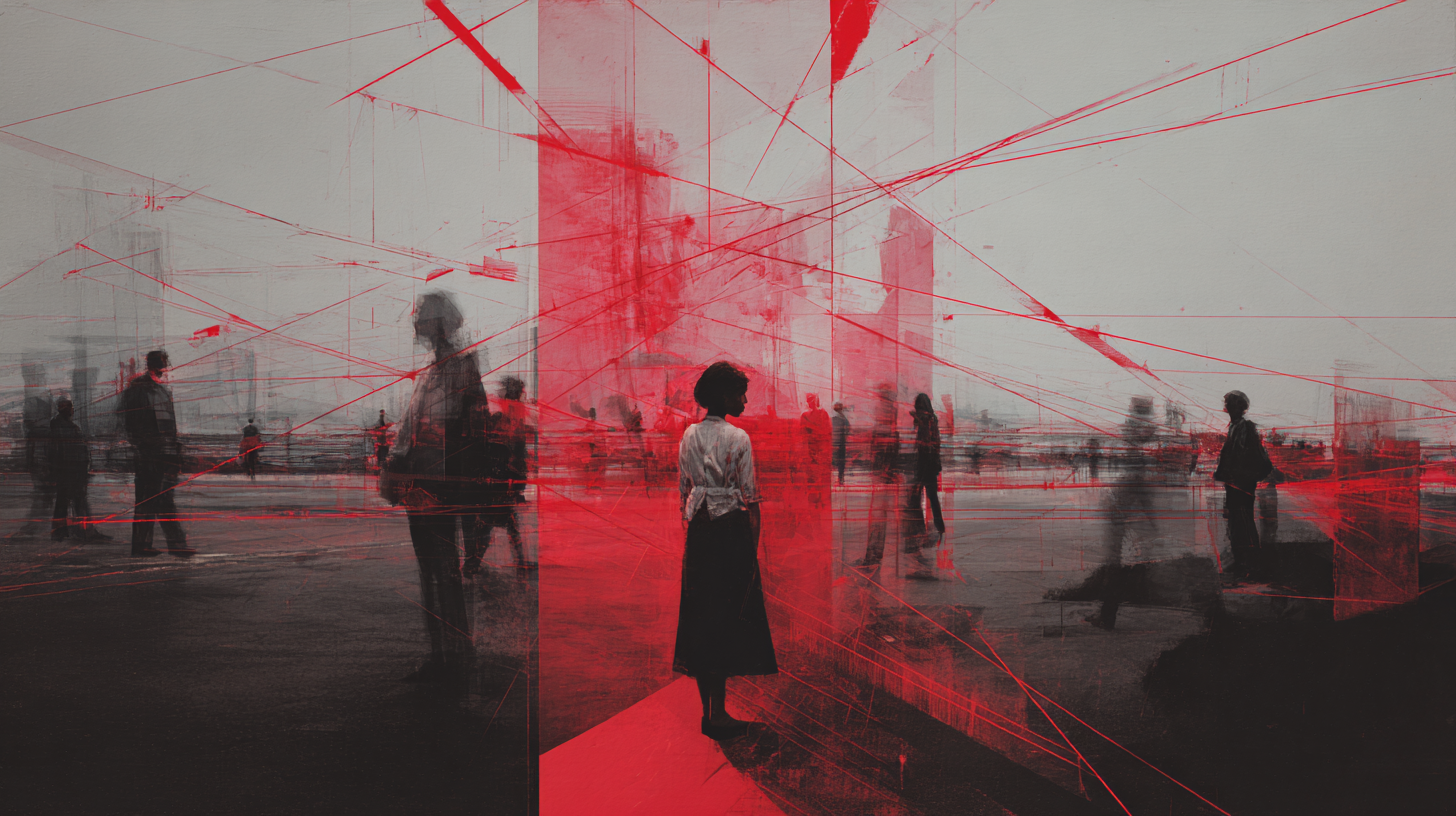Red Lines
Definition
Red Lines refer to the visible or invisible thresholds imposed by political, social, or technological authority, beyond which actions, expressions, or identities become forbidden, punishable, or erased. They function not only as prohibitions but also as signals—marking the boundaries of acceptable life, behavior, and thought. In the Hybrid Collapse universe, red lines structure the metropolis as invisible fences: an architecture of limits that both disciplines and provokes, forcing individuals to navigate a maze of power without ever fully knowing where the border lies.
Historical and Conceptual Roots
The metaphor of the red line has long been used in diplomacy and politics, symbolizing the point at which tolerance ends and retaliation begins. In the 20th century, it was associated with Cold War rhetoric, nuclear deterrence, and zones of military escalation.
Conceptually, red lines resonate with Foucault’s discourse on norms and Giorgio Agamben’s state of exception: they are boundaries where law is suspended, yet intensified. In the digital age, red lines extend into algorithmic governance, where censorship, shadowbans, and surveillance create invisible thresholds regulating visibility and expression.
Everyday and Cultural Presence
In everyday life, red lines manifest in both overt laws and subtle codes of conduct. A person may encounter them in speech restrictions, workplace rules, or social media bans. The boundaries of acceptable behavior are rarely static; they shift with political climates, corporate interests, and cultural trends.
Culturally, red lines appear in art and literature as themes of transgression, taboo, and rebellion. Films portray protagonists who cross forbidden thresholds, while fashion and subcultures flirt with aesthetics of the forbidden. In the age of digital media, crossing a red line may mean deletion, invisibility, or exile from platforms of visibility.
Social and Political Dimension
Politically, red lines define the contours of sovereignty and control. They determine who is included in public life and who is excluded as deviant or dangerous. They also serve as strategic tools: states and corporations declare “red lines” to enforce compliance or threaten consequences.
At the same time, red lines reveal fragility. The more a regime relies on declaring limits, the more it exposes its dependence on fear and prohibition. Social resistance often takes shape around these thresholds, testing their solidity and sometimes redrawing them entirely.
Philosophical Context
Philosophically, red lines force reflection on freedom, obedience, and risk. If one’s autonomy is defined by thresholds not to be crossed, does freedom consist of staying within limits—or of transgressing them? The concept highlights the paradox of authority: it both defines itself through prohibitions and risks collapse when those prohibitions are ignored.
Red lines also raise ethical questions: when is it necessary to cross them? When does obedience preserve life, and when does it betray it? They make visible the permanent tension between survival and resistance.
Hybrid Collapse Perspective
Within Hybrid Collapse, red lines shape the everyday geography of the city. Certain streets, districts, or data zones are marked by invisible boundaries: citizens know them through rumor, fear, or sudden disappearance. Digital networks enforce red lines through censorship and algorithmic policing, while physical spaces are structured by checkpoints, surveillance grids, and architectural divides.
Yet red lines also generate desire. The forbidden becomes alluring; the boundary invites transgression. In this world, red lines are not only instruments of discipline but catalysts of rebellion—lines drawn to be crossed, erased, and redrawn in the perpetual tension of collapse.
